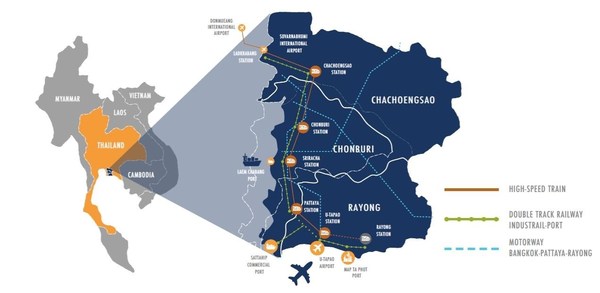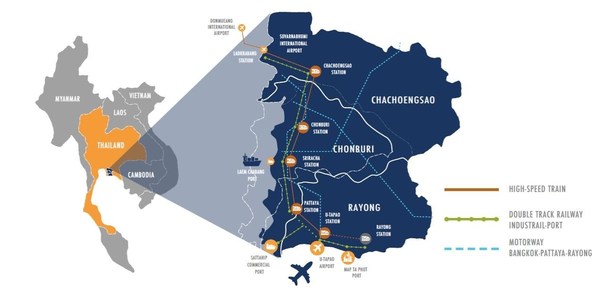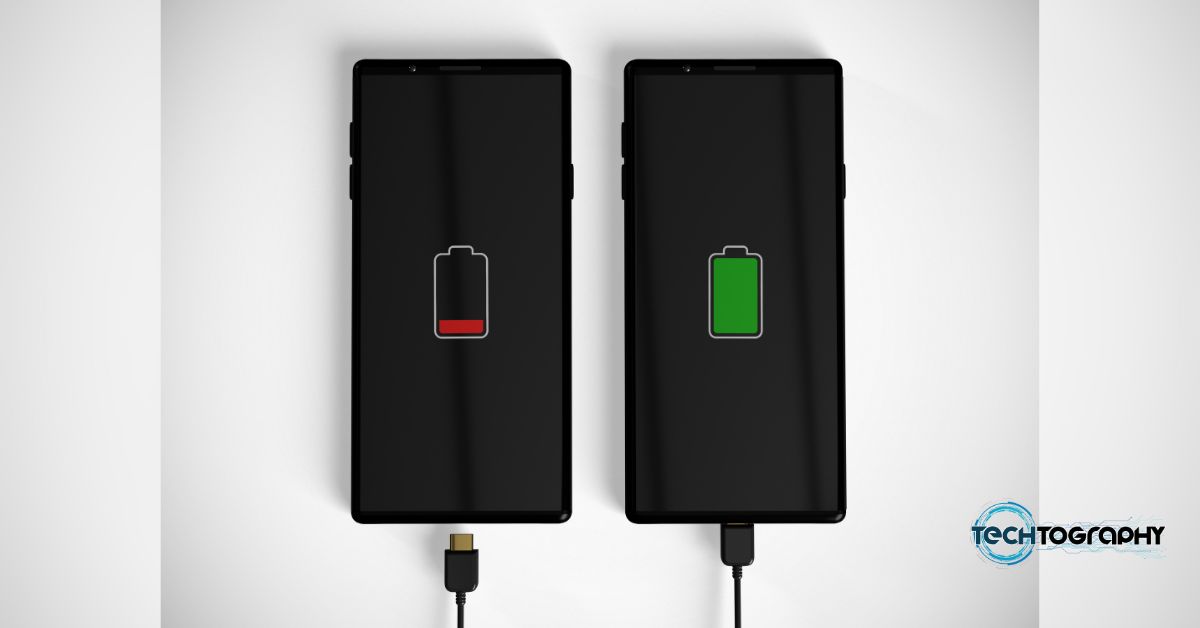BANGKOK, Jan. 12, 2021 /PRNewswire/ — Thailand’s high-tech Eastern Economic Corridor (EEC) will this year become the first part of Southeast Asia to offer 5G telecommunications connectivity as it targets becoming the region’s gateway and digital innovation hub, EEC Secretary General Kanit Sangsubhan said.

Map of Thailand’s Eastern Economic Corridor, or EEC, showing the main infrastructure projects under development which will further boost the area’s connectivity.
"Half the area of the EEC will be covered by 5G by February 2021," Dr Kanit said. "The signal is already there and we are now working with companies and local residents to help offer them the best solution for their individual needs."
In a wide-ranging interview to mark the upcoming third anniversary of the establishment of the EEC, Dr Kanit also confirmed that the government and private investors would this year spend 100 billion baht ($3.3 billion) on the next stage of construction of a 220-km high speed train connecting Bangkok’s two existing airports, Suvarnabhumi and Don Muang, with the EEC’s own airport at U-Tapao.
Dr Kanit added that 5G connectivity combined with the high speed train would help transform U-Tapao and its surrounding area into Thailand’s equivalent of Japan’s Narita or South Korea’s Incheon – a smart city "aerotropolis" twinned with the nation’s capital one hour away at the other end of the train line. Narita International Airport Corp., the company that operates Tokyo’s main airport, will be a part of consortium to manage U-Tapao, Dr Kanit said.
The EEC, a 13,000 square kilometer zone stretching south and east of Bangkok, became a legal entity in May 2018 as part of an ambitious strategy known as Thailand 4.0 aimed at raising the Kingdom from middle-income to fully developed nation status by 2035.
Covering three provinces with a total population of three million, the EEC is already home to the world’s 11th largest auto exporting industry, leading global suppliers of hard disc drives and home appliances, a major petrochemical industry and the international tourist resort of Pattaya.
Under the Thailand 4.0 plan, automakers and their supply chains are transitioning to electric vehicle production, the electronics sector is upscaling and petrochemical manufacturers are increasingly adopting less polluting renewable biotechnologies as Thailand embraces the so-called bio-circular-green economy.
Now they are being joined in the EEC by companies specializing in artificial intelligence, robotics, medical devices and biosciences including such futuristic technologies as genomics sequencing. For investors and employees, housing will increasingly be available in environmentally and connectivity-friendly smart cities located around scenic Pattaya.
Dr Kanit stressed that the EEC vision extends far beyond the immediate region. It aims to become a logistics hub and gateway linking the world’s two most populous countries, China and India, and the Association of Southeast Asian nations (ASEAN) trading bloc of which Thailand is the second largest economy. Between them, China, India and the 10 ASEAN states account for some 3.5 billion consumers or almost half the world’s population, with the EEC geographically at the crossroads to connect them. The ASEAN countries of Brunei, Cambodia, Indonesia, Laos, Malaysia, Myanmar, the Philippines, Singapore, Thailand and Vietnam have a combined population of some 650 million.
Dr Kanit said the EEC already had a close relationship with China’s Greater Bay area which includes Hong Kong, the booming technology hub of Shenzhen and other major cities in the economic powerhouse of Guangdong province.
He described the EEC’s role as a "dry port" for goods and commodities passing through the region. With the help of a planned "land bridge" to connect the Kingdom’s Gulf of Thailand and Indian Ocean, containers shipped through the EEC to India would be able to reach their destination four or five days quicker than using the existing route via Singapore and the heavily congested Malacca Strait, Dr Kanit estimates. In turn, Thailand’s connection with China provides an onward overland link to Europe.
The total cost of developing the EEC is 1.7 trillion baht (about $60 billion), 80 percent of which will be funded by the private sector and 20 percent by the government. About one-third of that will be spent in the next four or five years on completing the high-speed train, the airport and expansion of two sea ports at Laem Chabang and Map Ta Phut, Dr Kanit said.
Despite the impact of the global COVID-19 pandemic, Dr Kanit said the EEC since its inception has met its average annual private sector investment target of 300 billion baht. He also praised the effectiveness of the public-private partnership investment model the EEC has adopted.
Dr Kanit cited the example of the high-speed rail which is half funded by the government and half by a consortium led by Thailand’s CP Group and backed by international investors. "CP group mobilized a team," Dr Kanit said. "Construction is from China, technology from Italy and funding from both Japan and China. That is the power of the private sector. What we have achieved is to mobilize the government, the private sector and the local people. This has never happened before and it is what excites me so."
Foreign investors say they are excited also. "It’s all about location, location, location and the EEC is definitely the right place to be," Stanley Kang, Chairman of the Joint Chambers of Commerce in Thailand, which represents 9,000 companies from 36 countries, said in an interview. "In the past, the attraction for investors was cheap land and labor. But our future is creativity and innovation and Thailand’s advantage is the EEC. There is a big opportunity now and a lot of investment is moving in."
Mr Kang credits the success of the high-tech corridor to a visionary long-term focus by the Thai government on quality hard and soft infrastructure. Long before it was rebranded as the EEC, the region was known as the Eastern Seaboard. When the company Mr Kang heads, TIC Group, first opened a factory there in the 1980s, the land was occupied by "cobras and cows" and the road from Bangkok only had two lanes.
"It took you four hours to drive there and overtaking was as dangerous as being on a race track," Mr Kang said. "Then the highway became four lanes, then six lanes and now in parts it is eight-lane. Thailand realized that without good infrastructure you can’t get foreign direct investment. You didn’t just need a port, you needed an efficient port. You also needed ease of doing business and the government provided that with a one-stop shop for the necessary permits."
The strategy worked and the Eastern Seaboard prospered. "Thailand did a great job 30 years ago and now they are focusing on a different type of investment for the next 30," Mr Kang said. "We are moving fast and have to continue to do so."
Youtube: https://www.youtube.com/watch?v=AyytDckn_TY
For more information, please visit: https://www.eeco.or.th/en



